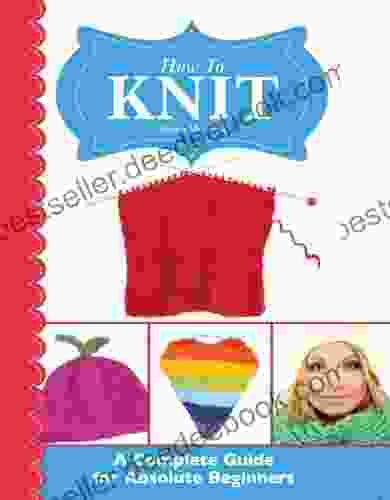The Ultimate Beginner's Guide to Web Development: A Comprehensive Roadmap

In the realm of digital technology, web development reigns supreme as the cornerstone of the internet. It empowers us to create interactive, informative, and engaging online experiences. Whether you're a complete novice or have dabbled in coding before, this comprehensive guide will provide you with a thorough understanding of the fundamentals of web development. We'll embark on a journey through the intricacies of HTML, CSS, JavaScript, and the essential tools and techniques that will transform you from a beginner to a confident web developer.
Chapter 1: HTML: The Building Blocks of Web Pages
HTML (Hypertext Markup Language) forms the backbone of every web page. It's a markup language that defines the structure and content of the page. Consider HTML as the blueprint of a house, outlining the various sections, headings, paragraphs, and other elements that constitute the page.
4.4 out of 5
| Language | : | English |
| File size | : | 12611 KB |
| Text-to-Speech | : | Enabled |
| Enhanced typesetting | : | Enabled |
| Print length | : | 48 pages |
| Lending | : | Enabled |
| Screen Reader | : | Supported |
Some fundamental HTML elements include:
- <head>: Contains metadata about the page, such as the title, author, and description.
- <body>: Houses the visible content of the page, including text, images, videos, and other elements.
- <h1>: Header tags for the main headings.
- <p>: Paragraph tags for body text.
- <a>: Anchor tags for hyperlinks.
- <img>: Image tags to display images on the page.
Chapter 2: CSS: Styling the Web
CSS (Cascading Style Sheets) adds style and visual flair to HTML. It allows you to control the appearance of elements on the page, such as fonts, colors, layouts, and animations. Think of CSS as the interior designer of your web page, responsible for beautifying and enhancing the user experience.
Key CSS properties include:
- color: Sets the text color.
- font-family: Specifies the font used for the text.
- font-size: Controls the size of the text.
- background-color: Sets the background color of an element.
- margin: Defines the space around an element.
- padding: Adds space within an element.
Chapter 3: JavaScript: Bringing Pages to Life
JavaScript brings interactivity and dynamism to web pages. It's a scripting language that allows you to manipulate the page's content and respond to user actions. JavaScript adds functionality to your site, such as validating forms, displaying dynamic content, and creating interactive animations.
Common JavaScript concepts include:
- Variables: Stores data and information.
- Functions: Reusable blocks of code that perform specific tasks.
- Events: Triggers that respond to user actions, such as clicking a button or moving the mouse.
- Loops: Iterates through data and executes code multiple times.
- Conditions: Controls the flow of code based on specific conditions.
Chapter 4: Essential Tools and Techniques
In addition to HTML, CSS, and JavaScript, there are various tools and techniques that enhance your web development workflow.
- Code editors: Specialized software for writing, editing, and debugging code.
- Version control systems: Track and manage changes to your code over time (e.g., Git).
- Package managers: Install and manage dependencies and libraries for your projects (e.g., npm for JavaScript).
- Web browsers: Render HTML, CSS, and JavaScript to display web pages.
- Developer tools: Built-in tools within web browsers that aid in debugging and troubleshooting code.
Chapter 5: Building Your First Website
Now that you've grasped the fundamentals, it's time to put your knowledge into practice by building your first website. Follow these steps:
- Plan your website: Determine the purpose, content, and target audience for your site.
- Create HTML structure: Start with a basic HTML template and structure for your pages.
- Add CSS styling: Enhance the appearance of your site with CSS.
- Implement JavaScript: Add interactivity and functionality.
- Test and deploy: Ensure your site functions correctly and publish it online.
This comprehensive guide has provided you with a solid foundation for web development. By understanding the basics of HTML, CSS, and JavaScript, and utilizing the essential tools and techniques, you can now embark on your journey as a web developer. Remember, practice makes perfect, so experiment with different projects and seek resources to expand your knowledge. The world of web development is constantly evolving, but with dedication and curiosity, you can continuously grow and navigate the ever-changing landscape.
As you progress on your web development journey, remember these key principles:
- Stay curious: Explore new technologies, tools, and concepts.
- Collaborate with others: Share knowledge, learn from peers, and seek mentorship.
- Build projects: Create websites, apps, and experiments to refine your skills.
- Keep learning: Technology advances rapidly, so continuous learning is crucial.
- Have fun: Enjoy the process of creating and building for the web.
Empower yourself with the knowledge and skills of web development. Create a positive impact, connect with others, and make the digital world a more vibrant and engaging place. The journey of a web developer begins with the first step, and this guide has equipped you with the essential tools and knowledge. Embrace the possibilities that lie ahead and embark on your path of creating exceptional web experiences.
Image Alt Attribute
Diagram of a computer screen displaying the code of a web page being developed. The code includes HTML, CSS, JavaScript, and various tools and icons.
4.4 out of 5
| Language | : | English |
| File size | : | 12611 KB |
| Text-to-Speech | : | Enabled |
| Enhanced typesetting | : | Enabled |
| Print length | : | 48 pages |
| Lending | : | Enabled |
| Screen Reader | : | Supported |
Do you want to contribute by writing guest posts on this blog?
Please contact us and send us a resume of previous articles that you have written.
 Book
Book Novel
Novel Page
Page Chapter
Chapter Story
Story Genre
Genre Library
Library Paperback
Paperback E-book
E-book Magazine
Magazine Sentence
Sentence Bookmark
Bookmark Shelf
Shelf Glossary
Glossary Preface
Preface Codex
Codex Tome
Tome Biography
Biography Memoir
Memoir Reference
Reference Dictionary
Dictionary Resolution
Resolution Librarian
Librarian Borrowing
Borrowing Archives
Archives Periodicals
Periodicals Study
Study Research
Research Scholarly
Scholarly Reserve
Reserve Academic
Academic Journals
Journals Reading Room
Reading Room Rare Books
Rare Books Thesis
Thesis Dissertation
Dissertation Storytelling
Storytelling Awards
Awards Theory
Theory Textbooks
Textbooks Joel Stratte Mcclure
Joel Stratte Mcclure George Victory
George Victory Cynthia St Aubin
Cynthia St Aubin Robert W Tucker
Robert W Tucker Elizabeth Roberts
Elizabeth Roberts Founding Fathers
Founding Fathers Mark Bridgeman
Mark Bridgeman Lee Giles
Lee Giles Frank Turner
Frank Turner Terese Cato
Terese Cato Maia Ross
Maia Ross Nyla Nuray
Nyla Nuray Debra Thompson
Debra Thompson Simon Owedyk
Simon Owedyk Chi Young Kim
Chi Young Kim Mikael Shainkman
Mikael Shainkman Barbara Ransby
Barbara Ransby Kieran Duck
Kieran Duck Jan Nederveen Pieterse
Jan Nederveen Pieterse Amelia Rose
Amelia Rose
Light bulbAdvertise smarter! Our strategic ad space ensures maximum exposure. Reserve your spot today!

 Mikhail Bulgakov40 Classic Patterns Remade to Fit Your Style: Timeless Designs with a Modern...
Mikhail Bulgakov40 Classic Patterns Remade to Fit Your Style: Timeless Designs with a Modern... Ray BlairFollow ·18k
Ray BlairFollow ·18k Yasunari KawabataFollow ·11.6k
Yasunari KawabataFollow ·11.6k John UpdikeFollow ·18k
John UpdikeFollow ·18k Charles ReedFollow ·2.2k
Charles ReedFollow ·2.2k Arthur MasonFollow ·8.6k
Arthur MasonFollow ·8.6k Neal WardFollow ·7.9k
Neal WardFollow ·7.9k Anthony WellsFollow ·14.4k
Anthony WellsFollow ·14.4k Nikolai GogolFollow ·14.8k
Nikolai GogolFollow ·14.8k

 Brian Bell
Brian BellClassic Festival Solos Bassoon Volume Piano...
The Classic Festival Solos Bassoon Volume...

 Aubrey Blair
Aubrey BlairUnveiling the Courage: Insurgent Women Female Combatants...
In the face of armed...

 Jan Mitchell
Jan MitchellFor The Liberty Of Texas: The Lone Star State's Fight for...
The Republic of Texas was a sovereign state...

 Edgar Allan Poe
Edgar Allan PoeVisible, Explainable, Trustworthy, and Transparent...
What is VET2...
4.4 out of 5
| Language | : | English |
| File size | : | 12611 KB |
| Text-to-Speech | : | Enabled |
| Enhanced typesetting | : | Enabled |
| Print length | : | 48 pages |
| Lending | : | Enabled |
| Screen Reader | : | Supported |













